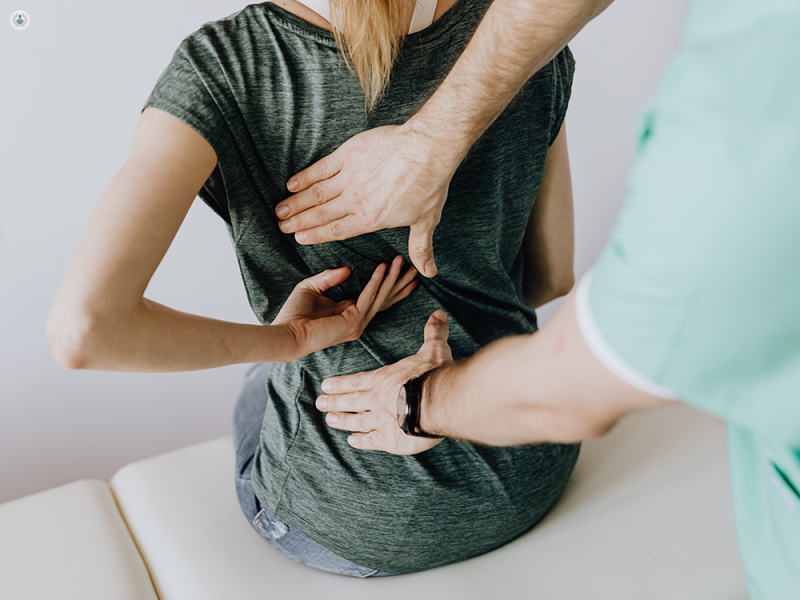How are low back pain and sciatica managed non-surgically?
Escrito por:Here, a renowned consultant orthopaedic surgeon and sports medicine specialist provides a comprehensive overview of how low back pain and sciatica are managed non-surgically.

Low back pain and sciatica are common conditions that can significantly impact a person’s quality of life. While surgery is an option for severe cases, most individuals with low back pain and sciatica can find relief through non-surgical management. Non-surgical treatments focus on reducing pain, improving function, and enhancing the quality of life without the risks and recovery time associated with surgery.
The first line of treatment for low back pain and sciatica typically involves physical therapy. A physical therapist designs a personalized exercise program that strengthens the muscles supporting the spine, improves flexibility, and promotes better posture.
Core-strengthening exercises are particularly beneficial, as they help stabilise the spine and reduce pressure on the lower back. In addition, stretching exercises can alleviate tightness in muscles like the hamstrings, which can exacerbate sciatica symptoms.
Medications are another cornerstone of non-surgical management. Over-the-counter pain relievers, such as nonsteroidal anti-inflammatory drugs (NSAIDs), can help reduce inflammation and relieve pain. In some cases, doctors may prescribe stronger medications, including muscle relaxants or nerve pain medications, to manage more severe symptoms. For individuals with chronic pain, nerve blocks or epidural steroid injections may be recommended to provide longer-lasting relief by reducing inflammation around the affected nerves.
Lifestyle modifications are also crucial in managing low back pain and sciatica. Maintaining a healthy weight reduces strain on the spine, while regular physical activity keeps the back muscles strong and flexible.
Ergonomic adjustments, such as using a supportive chair or modifying the workstation, can help prevent aggravation of symptoms. Practicing good posture and body mechanics, particularly during activities like lifting heavy objects, is essential to avoid further injury.
Additionally, complementary therapies such as acupuncture, chiropractic care, and massage therapy can offer relief for some individuals. These therapies can help reduce muscle tension, improve circulation, and promote relaxation, contributing to pain management and overall well-being.


